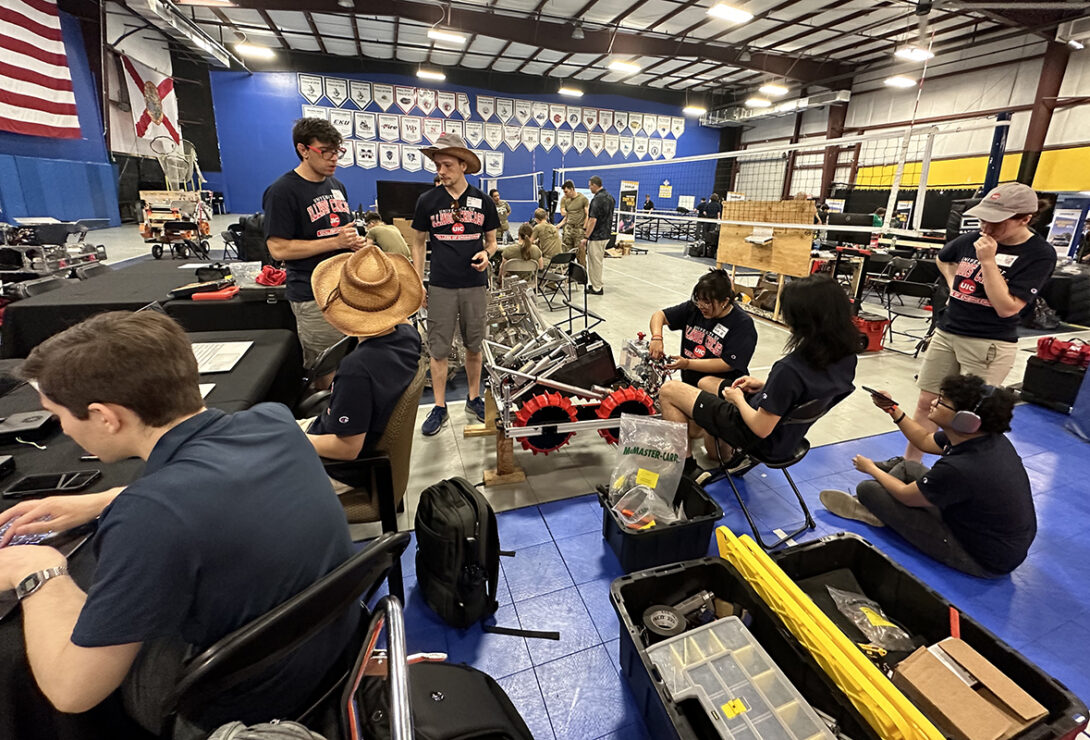UIC students impress judges at NASA Lunabotics competition
UIC students impress judges at NASA Lunabotics competition

UIC’s Lunabotics team captured two awards during the recent NASA 2024 Lunabotics Challenge held at The Astronauts Memorial Foundation’s Center for Space Education at the agency’s Kennedy Space Center Visitor Complex in Florida.
The team competed against more than 40 schools in the qualifying round to advance them to the next competition of only 10 teams. During that final round, UIC won the Persistence Award — “Failure is Not an Option” and the Innovation Technology Award. They also placed fifth in the Caterpillar Autonomy Award.
The Lunabotics team is part of the Engineering Design Team student organization, which is made up of multiple groups that take part in competitions that require a diverse set of engineering backgrounds.
The interdisciplinary team members at the competition were electrical and computer engineering students Colton Diederich, Gregg Angelo Escalon, Luca Russo, and Catherine Schuch; mechanical and industrial engineering students Nimai Kamdar, Chloe Richmond, and Elijah Wilkinson; biochemistry students Vivian Molina Sumba and Yuri Labuca; and computer science student Manh Phan.
Additional team members who contributed but did not attend the competition include computer science students Travis Martin and Catherine Sung, and electrical and computer engineering students Zain Ali, Teegan Springer, and Adrian Velazquez.
For the competition, the UIC students designed, built, and controlled a robot to mine a lunar landscape and build a section of a berm. The team also performed public outreach, submitted systems engineering papers, and presented their work to a NASA review panel.
“It’s all reflective of real life,” Wilkinson said. “Having a lighter robot is good because shipping costs to space are expensive. Having a robot that uses less energy and less data transfer is good. They’re also looking for you to build a bigger and more accurate pile. A big part of that competition is also autonomy, and how much you’re able to do all the tasks autonomously.”
The students earned the Persistence Award — “Failure is Not an Option” for overcoming an unexpected problem when they had issues with their robot connecting to the wrong Wi-Fi. However, the team grabbed the judges’ attention with an innovative element inspired by Chicago winters.
“Our robot has a new feature that they haven’t seen in the past,” Wilkinson said. “We added a giant industrial vibrator that’s used on the back snowplow trucks with big salt containers that they spread. The vibrator shakes the salt down so it doesn’t clog up. We have a big scoop on our robot, and we vibrate it really hard and very fast, so it kind of fluidizes the sand, and there is a lot less resistance because the lunar landscape is a lot harder to dig through than normal sand. This stuff really compacts and it’s like gravel on a micro level and it all crunches together.”
This design element also allowed the students to grab larger scoops, which differed from most other teams using small scoops.
“The judges were very impressed. We had a couple of NASA employees posting about us on Twitter, with videos like, ‘Hey, look at this robot. This is so cool.’ I think the whole purpose of Lunabotics is to generate cool ideas. And we got the innovative design award for that,” he said.
While the team is very happy with their performance, they plan to return next year with a fine-tuned robot and their sights set on first place.